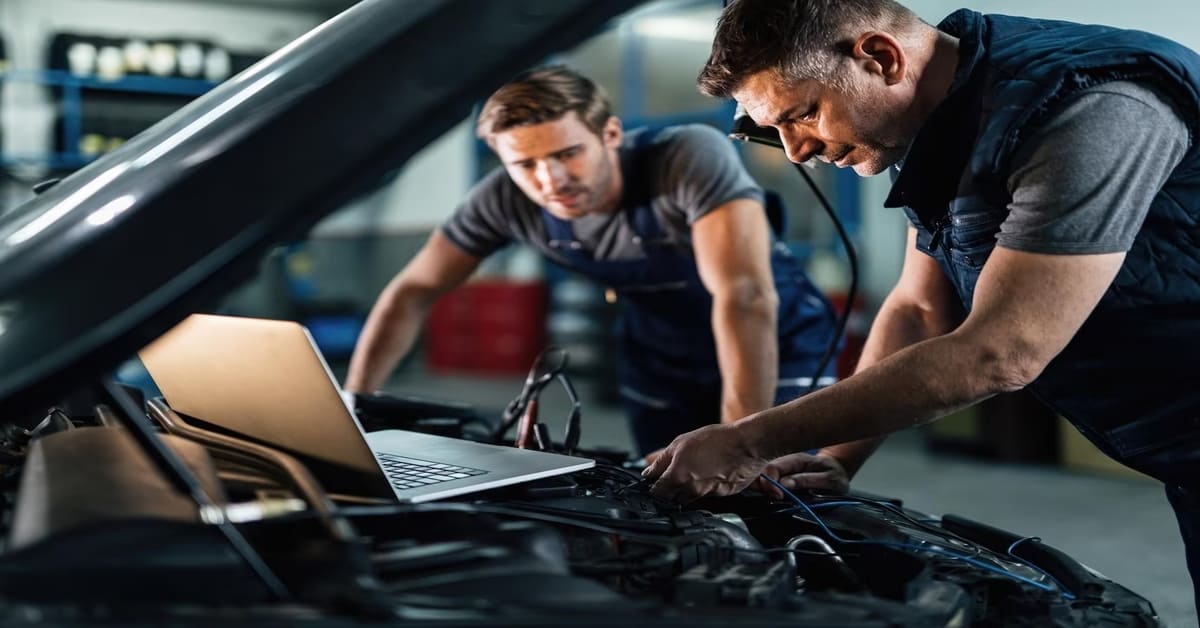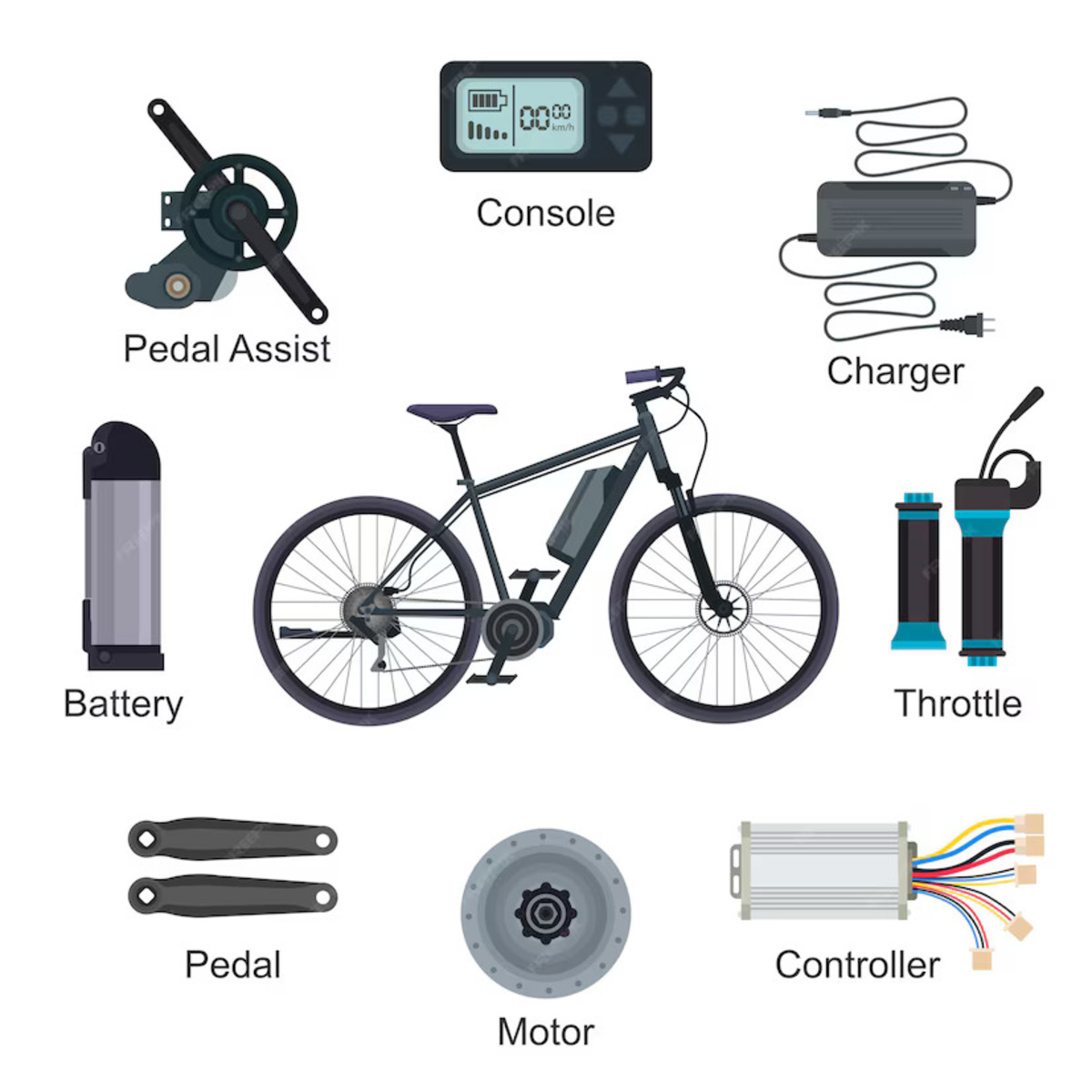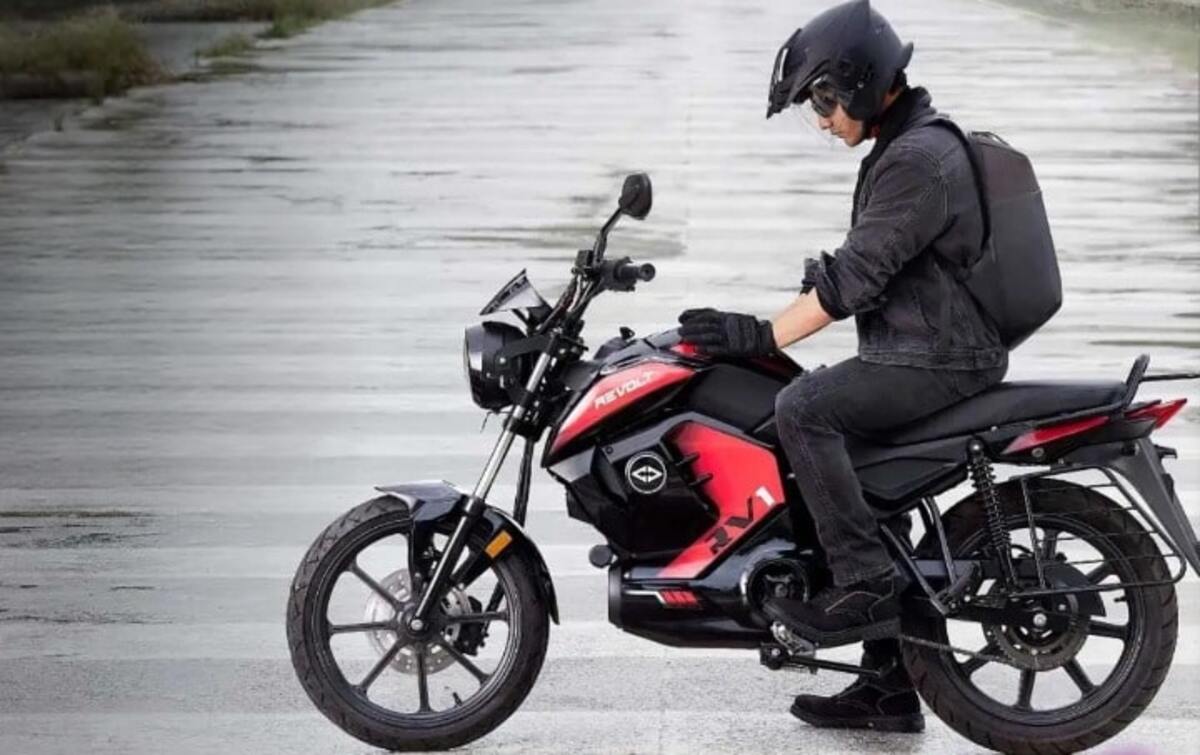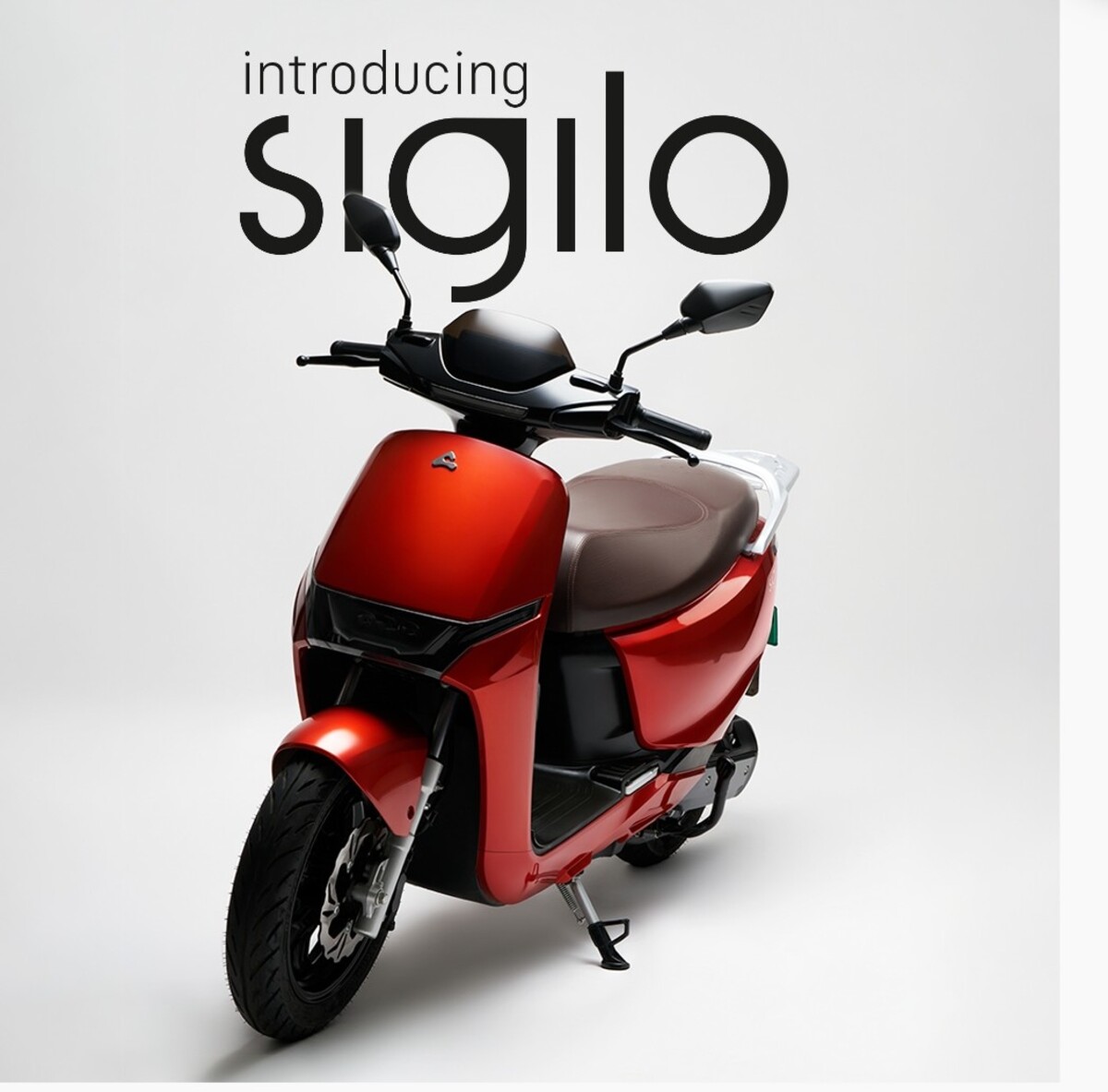Here we will acquire the knowledge of What Is An Electric Vehicle Conversion or Retrofit? In this process the combustion engine of car and its associated components are replaced with batteries and electric motor.
What Is An Electric Vehicle Conversion or Retrofit?
Electric vehicle retrofitting refers to transforming a gasoline or diesel car into an EV. In this process, the engine and fuel tank of traditional vehicles are removed and restored with an electric motor and battery, and it works like an electric vehicle.
When CNG was started in Delhi, a conversion (vehicles converted to CNG) of more than 30 lakh vehicles occurred. A similar wave can be seen now when traditional vehicles are converted into electric vehicles by retrofitting. Although electric vehicle retrofitting in India is in its early stages, it will increase rapidly in the coming years. India is actively working towards clear transportation with the extension of electric mobility.
Importance of Electric vehicle Retrofitting
The government of India has set the target of having more electric vehicles on the roads so that carbon emissions will be reduced. However, the pace of this transition is not as fast as it should be. It is an era where not only India but also the whole world is trying to reduce greenhouse gas emissions to save the environment. To fight a changing climate, we all need to take a step further, and EV conversion is the most viable solution.
Those people who have bought their vehicle in the last 2-3 years, it might be that they would not find it easy to buy another electric vehicle. So, the government is here with the new process of electric vehicle retrofitting. Electric vehicle retrofitting can be applied to all vehicles that are five years old. The government is focusing on transforming all internal combustion engines into electric vehicles.
It is expected that there will be more than 3 million buses on the road by 2030. As our population is also increasing rapidly, there is no doubt that at the same speed, other public transport would also increase, making our roads more congested. So, electric vehicle retrofitting can be a better solution than upgrading traditional vehicles. It will reduce carbon emissions too. The primary goal of retrofits is to promote cleaner air.
Are You Planning To EV Retrofit Your Gasoline or Diesel Vehicle?
Many automobile companies are offering to convert your traditional vehicle into a retrofit. Sometimes the retrofitting process can be difficult if the conversion kit is not compatible with your car. The following are the points that you need to consider if you have planned to retrofit your vehicle:
- The foremost point is that you should visit certified retrofitter who is well experienced in this field, and there are many other companies that provide retrofitted services.
- If you have decided to retrofit your car by yourself, then you have two options: either you can order a retrofit conversion kit that has several necessary tools like a motor, controller, charger, chill plate, transmission adaptor kit, DC convertor, throttle controller, etc., or you can order the equipment individually and get it to work yourself.
Step-By-Step Electric vehicle Conversion Process of a Petrol or Diesel Car into an Electric Vehicle
Before converting your car into a retrofit, you must check that the overall condition of the car is good; then only retrofitting will work properly. A two-wheeler is easier to retrofit than a heavy four-wheeler.
Below are the points to consider for EV retrofit
- The first step is to remove all the hardware of a traditional vehicle, such as the fuel tank, engine, starter, radiator, and exhaust.
- The empty place will be replaced with the most important part of an electric vehicle, which is the ‘electric motor.’ The size of the motor depends on the size and weight of the vehicle.
- The next important component is the ‘battery pack’ that is to be put inside the vehicle. Now you need to decide whether you want to go for lead-acid batteries or lithium-ion batteries. Lithium batteries are good for storing energy and are considered ideal for high-tech devices. Then there are lithium cells, which are tiny and lighter but more expensive and need more protection. How many batteries are required depends on the available space where they can be fitted in the vehicle.
- The next thing you require is a ‘power controller’ that is used to change the battery current and regulate the flow of energy between the motor and the battery. Once your gasoline car has been retrofitted, you are supposed to modify the registration card of your vehicle so that the paper shows the new energy source of the vehicle.
A Flow Chart of the Electric vehicle Conversion Process of a Petrol or Diesel Car into an Electric Car
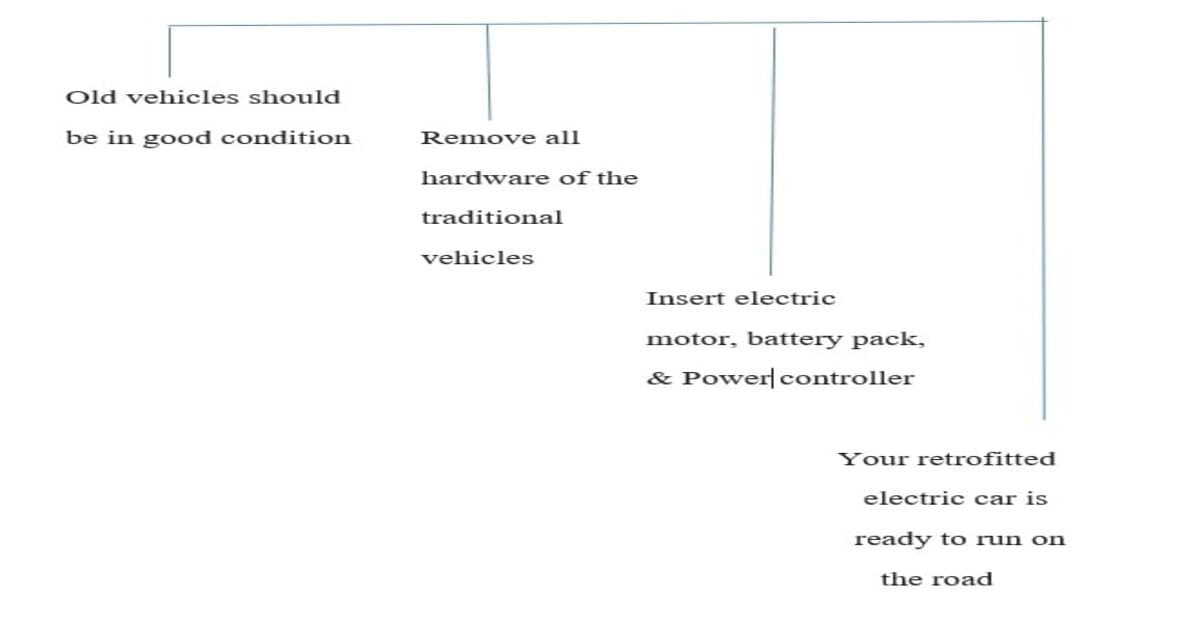
Advantages of Electric Vehicle Retrofitting
If you have decided to transform your gasoline vehicle to a retrofitted electric vehicle, there can be both pros and cons to it. When you convert your car to an electric car, it is helpful to make the environment green and leads to many more advantages, which are mentioned below:
- Lessen The Running Cost Of The EV
- Increases The Life Span Of Vehicles
- Good For Public Health
- Reduces Oil Consumption
Now we will discuss the above points of electric vehicle retrofitting :
1. Lessen The Running Cost Of The EV
Electric vehicles are more expensive to buy than traditional vehicles, but if we convert internal combustion engines to electric vehicles by retrofitting, it not only makes the environment eco-friendly but also reduces the cost of electric vehicles.
2. Increases The Life Span Of Vehicles
Electric vehicle retrofitting increases the longevity of an electric vehicle, and you should feel pride in your contribution to the sustainability of the environment.
3. Good For Public Health
Electric vehicle retrofitting is good not only for the climate but also for human health as it emits no harmful gases.
4. Reduces Oil Consumption
Electric vehicle retrofitting runs on electricity, so it automatically reduces the consumption of oil, and less consumption of oil leads to less import, and less import of oil reduces the expenditure on oil import. Retrofitting is beneficial from the point of view of the government too.
Disadvantages of an Electric Vehicle Retrofitting
The market for retrofitting is nascent in India, and a lack of charging stations can be the biggest obstacle to the adoption of EVs. Apart from some benefits of electric vehicle retrofitting, there are some disadvantages too, which are given below:
- Limited Range of Device
- Increased Cost of Conversion Kits
- Additional Maintenance Cost
Now we will discuss the above points of disadvantage of electric vehicle retrofitting :
1. Limited Range of Device
When you convert your traditional vehicle into an electric car, it limits the range of your car and cannot run more than 320 kms (approximate number, it also depends on the type and model of car) at one charge, so you need to plan your trip accordingly because a lack of charging stations can also create hurdle in your path.
2. Increased Cost of Conversion Kits
Conversion of gasoline cars into electric cars is a good initiative of the government to tackle vehicle pollution. Even then, you need to consider the cost of the conversion kit. The price of the conversion kit may vary depending on the car’s model and its capacity. The maintenance cost of an electric vehicle also increases when you convert an internal combustion engine into a retrofitted electric vehicle.
3. Additional Maintenance Cost
Once your vehicle is retrofitted, you need to replace the battery every few years, which increases the additional maintenance cost.
Companies Providing Electric Vehicle Conversion Conversion Kits:
There are many companies like E-Trio, Alti-Green, Loop Moto, Race Energy, Folks Motor, Bharat Kit, etc. that provide EV retrofit conversion kits. More companies you can find here.
Different types of Electric Vehicle Conversion Kits:
- Loop Moto Electric Conversion Kit
- Rexnamo Electro-Electric Car Conversion Kit
- E-Trio Electric Conversion Kit
- Folks Motor-Electric Conversion Kit
- Bharat Kit: Electric Car Conversion Kit
Now we will discuss the the above different types of Electric Vehicle conversion kits in details:
1. Loop Moto Electric Conversion Kit
The company provides an electric powertrain that has a battery management system (BMS), lithium batteries, an AC charger, a motor, a gearless gearbox, and many more accessories that are mandatory to replace traditional cars to electric cars. ARAI (Automotive Research Association of India) certification has been given to Loop Moto.
The conversion kit Loop Moto Company costs between Rs. 3 lakhs and Rs. 5 lakhs.
2. Rexnamo Electro-Electric Car Conversion Kit
Rexnamo Electro is a Ghaziabad-based company that has been providing conversion kits and retrofitted electric cars for the last ten years. The company converts Volkswagens, old BMWs, and Honda City into electric cars. The conversion kit varies according to the type of car.
3. E-Trio Electric Conversion Kit
To boost the adoption of electric vehicles among existing vehicle owners, E-Trio was founded by Sathya Yalamanchili in 2016. The government approves conversion kit. The E-Trio conversion kit was also certified by ARAI, which appreciates the effort of E-Trio to convert petrol and diesel cars to electric. Its range is up to 180 kilometers. The kit is used to convert the Dzire, Maruti Alto, and WagonR. The E-Trio provides two types of conversion kits, such as the EV-150 and EV-180.
The E-Trio conversion kit costs around 3.5 lakhs to 4 lakhs. The conversion kit consists of a motor, onboard charger, gearbox, motor, DC convertor, power steering, etc. The company states that the EV180 kit is more powerful, and it takes 48 hours to convert the Swift Dzire, Maruti Alto, and WagonR into electric cars.
In addition, E-Trio buys old cars and changes them into retrofitted cars by extracting the components of traditional vehicles and replacing them with those of electric vehicles. The company retrofitted electric vehicles and conversion kits too.
4. Folks Motor-Electric Conversion Kit
Folks Motors manufactures the retrofit kit and converts the internal combustion engine into an electric one. Retrofit kits can be customized depending on the model of the car.
5. Bharat Kit: Electric Car Conversion Kit
Bharat Kit was founded in 2016, and it is a Hyderabad-based company. It retrofits hatchbacks and sedans. This company sells retrofitted cars and conversion kits. International Centre for Automotive Technology (ICAT) and ARAI certifications were also given to Bharat Kit Company for transforming the Maruti Alto, Swift Dzire, and WagonR into electric cars.
Its conversion kit includes a battery management system along with a battery, controller, gear box, on-board charger, kit gear selector, vacuum pump, charging gun, instrument cluster, motor (15 KW power), etc.
The company offers customized conversion kits depending on the capacity of the battery. The battery capacity of a sedan is 15 kwh, and for a hatchback, it is 12 kwh. The price of the Bharat conversion kit starts at Rs. 5 lakhs in India.
Conclusion
Retrofitting saves resources, preserves them, and limits their usage as we shift to electric mobility. Traditional vehicles faced many challenges, but retrofitting moves to sustainable mobility, and in the future, it will be more acceptable for the users as it leads to ‘green driving.’
